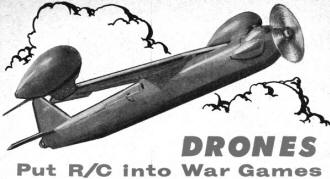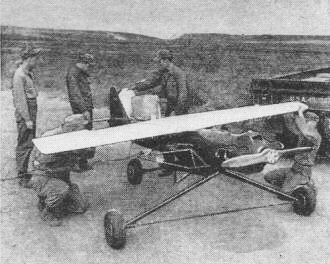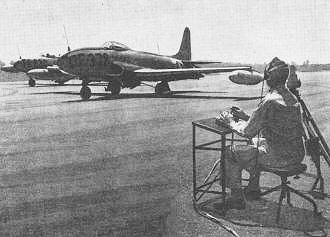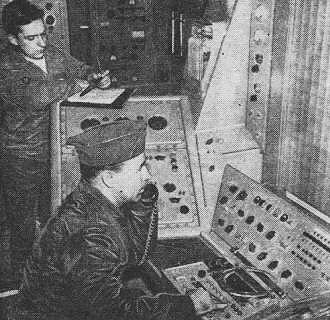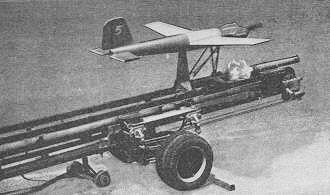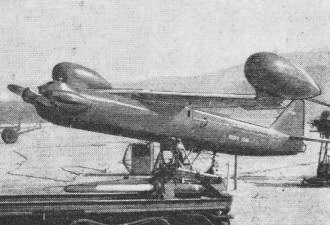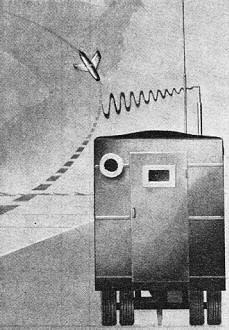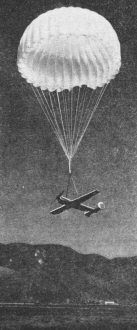Drones - Put R/C into War Games
|
|
The term "drone" these days for most invokes the image of a little plastic spider-looking thing with propellers mounted at the ends of the arms - usually with a toothless bumpkin at the controls. Those same people often think drones are relatively new devices. People with a just a little more information automatically classify all radio control (R/C) models, be they traditional fixed-wing aircraft or helicopters, as drones. Pilots of the aforementioned models are even likely, per observers, to have all their teeth and bathe regularly. I happen to be one of the latter type R/C modelers and while I no longer possess all 32 teeth I had at birth, I do bathe regularly. Drones have been around since World War I where they were used for target practice by ground-based marksmen. Once radio remote control became practical, adopting it for use in pilotless aerial platforms was a natural evolution. I have written in the past about what a large contribution hobbyists have made to "drone" technology both through their technical prowess and flying ability. Hobby magazines like Flying Models, American Aircraft Modeler, R/C Modeler, and others, have for decades reported on advancements in drone science. Drones - Put R/C into War Games High over the atomic test site in Nevada, three F-80 "Shooting Star" jet fighters orbited along precise flight paths. Their brilliant red fuselages glistened in the sunshine which soon would be dimmed by a man-made fireball from below. Would the planes withstand the blast about to be unleashed? Their mission: to find out. And find but they did. All three survived, although damage to two of them was severe. One crash-landed on a dry lake, preserving its precious instruments and records. One landed safely at a nearby Air Force base. The third was unfortunately lost in the mountains to the east. The Atomic Energy Commission announced: mission successfully executed. But what of the pilot lost in the mountains? As you have undoubtedly guessed, there was no pilot. The operation was but a routine demonstration of remote-controlled flight, Army aerial target is shown being prepared for flight. After use, damaged target models are rebuilt whenever possible so they can be flown again. Pilotless "Shooting Star" about to be flown off runway by controller. Director aircraft takes over during climb-out. Ground radar control station commands exact flight path of QF-80 jets through an atomic cloud or other precision test. Launching of small drone airplanes may be done in a variety of ways. A catapult is being used to provide Navy target drone with JATO assist. Radar corner reflectors in wing-tip appendages of drone insure .that radar-controlled guns receive echo from craft. Nor is this example an isolated one. Automatic gunfire control systems, as well as new type guns and shells, are regularly checked by the Navy using pilotless planes which dive and maneuver about the ships. Sleek gas- and jet-driven target models sharpen the shooting eyes of Army anti-aircraft batteries. And the little craft have all the tricks that are known to their bigger, piloted counterparts. Other nuclear missions greatly aid atomic energy research. Radioactive clouds have been probed with special instruments, and laboratory animals exposed to determine the radio-biological effects. A few years ago, unmanned B-17's crash-landed in the water to secure valuable information about the effects upon structures and to check the ditching procedures in use. They landed precisely at a predetermined spot already surrounded with elaborate equipment waiting to record the results ... without the risk of a single human life.
The "drones," as the pilotless planes are called, have advanced to a state of real precision. Most of this progress has been made since World War II, although during that struggle four Flying Fortresses were loaded with explosives and directed toward enemy lines. Pilots flew the planes from allied bases and bailed out once they were airborne. Of these, only one reached its German target. Today's techniques are a far cry from that meager start. Converted jet fighters and four-engined bombers fly entire missions from take-off to landing under control of operators on the ground or in nearby planes. Many models have been designed specifically for remote control operation. They range from small aerial gunnery targets (called R-CAT's by the Army for Radio-Controlled Aerial Targets) to powerful jet engine models like the Ryan "Firebee." The Navy recently announced that it even had a drone helicopter undergoing flight tests, while the Army has unveiled a photographic drone for reconnaissance missions. The electronic systems required to control these planes in flight cover a like span of complexity. "Beeper" pilots, so-called because of the characteristics of the control signals, have an array of control systems ranging from a simple joystick control to elaborate truck-mounted consoles. Some systems require the operator to "fly" the plane, i.e., use his judgment on how long or short a signal to transmit to cause the desired reaction. Others use proportional control and the operator merely turns a dial to the compass heading or altitude he wishes the drone to fly. Recovering small target drones is usually accomplished by parachute. Damage to essential parts by gunfire automatically releases the chute. Take-off and recovery techniques vary as much as the models themselves. The converted military planes are flown down the runway and into the air exactly as their piloted brothers are. Small drones are launched in a variety of ways. Sometimes a rotary launcher is used and the drone released after it is airborne and under control of the operator. In other cases a special catapult provides JATO (Jet-Assisted Take-Off) for a running start. Landings range from conventional wheel landings on long runways to parachute recoveries of the small target drones. On many of the target missions, of course, accurate gunfire makes recovery unnecessary. Average life of a drone is difficult to determine. The Navy's base at Chincoteague, Va., supplies drones for operations off the Virginia Capes. Using F6F's almost entirely, about 85% of their losses are from fleet gunnery, and the average life is about 2.75 missions. Other bases have reported drones which survived over 20 gunnery flights, although this is exceptional. "Armchair pilots" who fly these drones have to undergo extensive training. Flying full-sized converted fighters and bombers requires a skill possessed by only the best of "live" pilots chosen for the task. Safety pilots usually go along to check out the equipment initially, and on training flights, but the real McCoy is flown NOLO (NO Live Operator). Control is usually transferred to a director or chase plane after take-off which then controls the drone throughout the rest of its mission, returning control to the ground operator for the landing operation. Visual observation of the drone is not always required, however. Remote-controlled flights have ranged as far as 100 miles from the operator. In such cases, the drone's position is reported by radar tracking. New jobs are continually being found for the drones, and these jobs are being done more effectively, more efficiently, and at less human risk than with piloted airplanes. A more subtle but far-reaching benefit is the backlog of skills, equipment and manpower which will be available for the guided missiles of the future.
Posted February 22, 2022 |
|

